Kellen Smetana
After 2,000 miles of tough but beautiful riding, Carrie postmarked the bike, tossed out old cycling clothes, said final goodbyes, and was off to greener pastures. She will be missed, but two remain to continue the journey. The Smetana brothers were ready to head west.
After 2,000 miles of tough but beautiful riding, Carrie postmarked the bike, tossed out old cycling clothes, said final goodbyes, and was off to greener pastures. She will be missed, but two remain to continue the journey. The Smetana brothers were ready to head west.
Before departing, we made sure to catch up with all our friends in Minneapolis: Sheryl, Michael, Shelby, Anisha, and Varun. It’s always great to share a meal or drink with friends who have sprawled to various corners of the world. And, as has been evidenced, traveling cyclists always pause for a good meal.
Back on the road, we crossed the 2,000 mile mark heading out of the city. Cory and I rode north along the great Mississippi River, trying to meet back up with the ACA Northern Tier in a town called Dalbo. Though we often simplify our journey down to two words, “Northern Tier,” when we meet other cyclists, Dalbo would actually our first time back on this route since Niagara. (For a good visual, check out the pink route on the ACA Overview Map).
We targeted Dalbo as our evening destination not for its bustling 80 strong population, but for one resident in particular, Donn. Donn owns a large farm in Dalbo. Nine years ago, sitting on his porch looking out on the construction on the state highway, he saw two cyclists pushing their bikes through the sand. He felt so bad for these sorry souls that he invited them in for a meal and drinks and through conversation learned that his home sat smack dab in the middle of a cross-country cycling route. The next day, he decided to turn an unused barn into a “Bicycle Bunkhouse,” allowing all passing cyclists an evening of shelter. Nine years later, he now has cots enough for 18, an outhouse and outdoor shower, and has even converted an old silo to really tall room for two. We first heard about it from fellow riders in Wisconsin, and since then it seems that anyone with panniers and two wheels knows of the legendary Donn.
Traveling cyclists are still a rare breed, so most nights the Bunkhouse goes empty; this particular night we enjoyed the company of two other riders, Claude and Brad, also heading west. It was great to share war stories from the road – Claude had some particularly good pepper-spray drenched bouts with aggressive dogs – and also to spend some time with “the Donn” himself. Upon seeing the silo, Cory and I deduced that the opportunities to sleep inside a 70 foot vertical tube were sparse, so we immediately set up shop. It proved to be a good snooze until an early morning thunderstorm moved in with vengeance. The rain showers were amplified to the level of clanging pans inside the hollow metal silo; it was loud but bearable. When I saw the first lightning strike, however, I woke up Cory and decided we shouldn’t be cooped in the tallest metal structure for miles, so we moved into the Bunkhouse barn for the rest of the night. Donn had a good laugh at breakfast when he told us he was thinking about us the previous night, chuckling, and wondering if the storm would wake us up in the silo. It did.
Claude gets his miles in early, so he was gone before we awoke; Brad, also heading west, opted to join us for the day. Tired of work, he quit his job as an aerospace engineer to bike across the US, he started in Virginia and has worked his way north. The three of us pedaling together, it was a nice easy day as we moved through the land of 10,000 lakes – it really is amazing how many small lakes and ponds dot the countryside here. Glaciers leave a long aftertaste.
After an evening camped out on a restaurant patio in the small town of Bowlus, we parted ways with Brad the next morning. He continued north to visit his grandparents, we went west toward Fargo. We may very well cross paths again in the west, but for now we were back to two. Minnesota has a fantastic rails-to-trails network: from Bowlus we set off on over 110 miles of continuous paved bike trails. It was quite pleasant not having to worry about traffic.
We have often highlighted the benefits of bicycle tourism. One of those benefits is the development of an incredible connection to the history, economy, and culture of the places we pass through. As we moved across Michigan’s Upper Peninsula, for example, we passed dozens and dozens of abandoned motels, general stores, and service stations, just another example of the far-reaching effects of Detroit’s economic decline. A vast majority of tourists to that region still come from southeast Michigan, and the well-being of many of the smaller summer destinations has unfortunately moved in tandem with the city over the past two decades. Also in the UP, we learned that Michigan has resorted to generating small bits of revenue by selling off state land for logging, but has regulations preventing clear-cutting next to the road in order to keep the driving scenery natural. Interesting stuff. In the past few weeks we’ve met all sorts of individuals with fascinating stories: FEMA workers who live at the ready to be anywhere in the country in 24 hours for natural disaster cleanup and control… sometimes multi-month projects; a woman who extolled the benefits of artificial insemination in cow reproduction; retirees who haven’t been to a city in decades; and even people who explained how to covertly grow cannabis plants in trash bags suspended in pine trees. Our two recent city visits on the route have reminded us of the importance of transportation. Minneapolis / Saint Paul was once the site of a series of large falls on the Mississippi river, the furthest northern navigable point on the great waterway. Trade from the north coalesced there and built the cities into the bustling metropolis it has evolved into today. Fargo, our next destination, grew as the meeting of two major trade arteries: the Northern Pacific railroad and the mighty Red River. Major railroads still run right through the center of the city.
Back on the bike trail we were in for another lesson, this one geological, when we crossed an interesting sign about 5 miles south of Fergus Falls, Minnesota. It read, “Continental Divide.” I’ve been out west enough times to remember crossing the continental divide in high passes through the Rockies, and we certainly weren’t there yet. Fortunately, we ran into another cyclist, Kim, just as we were crossing this point who was able to explain to us that the continent is much more divided than I thought. It turns out this line divides waters north/south into those heading for Hudson Bay and those heading for the Gulf of Mexico. Just another day of biking and getting knowledge…
Back on the bike trail we were in for another lesson, this one geological, when we crossed an interesting sign about 5 miles south of Fergus Falls, Minnesota. It read, “Continental Divide.” I’ve been out west enough times to remember crossing the continental divide in high passes through the Rockies, and we certainly weren’t there yet. Fortunately, we ran into another cyclist, Kim, just as we were crossing this point who was able to explain to us that the continent is much more divided than I thought. It turns out this line divides waters north/south into those heading for Hudson Bay and those heading for the Gulf of Mexico. Just another day of biking and getting knowledge…
Fergus Falls was the end of the bike trails and we popped back on the roads. The further west we have moved across the state, the more the terrain has shifted from woodlands and lakes of Michigan and Wisconsin to open rolling farmland. This means when there is wind, we don’t have anywhere to hide from it. It was brutal as we left Fergus Falls, but we didn’t go far before taking a long mid-day break for the World Cup final. We zoned in on a tasty Mexican restaurant and were able to catch most of the game on Univision.
We camped that evening further up the road behind the community center in the town of Cormorant. There must be some sort of renewed Polar Vortex coming down into the Midwest because that evening it dropped into the 40s – in July!; fortunately, Cory and I were prepared. Sleeping bundled up in a tent is actually much better than trying to avoid touching sweaty legs to a sticky bag. We didn’t sleep all that well, however, because we were awaken twice in the night by a loud, large animal huffing just feet from our tent. Each time it was scared off and passed quickly. Needless to say, this also had us scared. We immediately hung the food in the swingset a hundred meters from the tent just in case and hopped on our phones to decipher whether we had just heard a moose, coyote, deer, or bear. Once we convinced ourselves it was definitely not the latter, we settled back in for a decent rest until morning.
The next day brought us to another new state! North Dakota is the first truly new one for Cory and me so far on the trip. We used the Warmshowers platform to find two fellow cyclists in Fargo, Ann and Ed, who were willing to host us for our stay. Ann has done quite a bit of cycling and even biked across the US several years ago. These wonderful hosts not only took us in and let us stay for two nights, but also cooked fabulous dinner both evenings! It was great to refill the tanks and hear their stories about the city. Most of you have probably heard of Fargo, and the reason is 1997. This was the year of both the eponymous Coen Brothers film and devastating floods in the city that made national headlines for weeks. Today it’s a really pleasant town with clean shops, lots of bikes, quaint homes, and good business.
Coupling eastern North Dakota with Minnesota, we were in a territory of significant Nordic and Scandinavian immigration for over 150 years. On our day off we trekked across the Red River back to Fargo’s sister city, Moorhead, Minnesota. There lies the amazing Hjemkomst Center. This museum was built around the Hjemkomst boat, a modern replica of an old Viking ship built by a Minnesota family in 1982 and sailed to Norway the next year. The center documents this homecoming journey, and has expanded to include an incredibly intricate Norwegian replica cathedral and other exhibits highlighting the region (currently it’s involvement in the WWII homefront).
Our great but short stay in Fargo is drawing to a close. Today we start our journey west, west, west across the state and hope the wind stays calm or is even at our backs. Tailwinds, interesting enough, may actually be more probable than you may think. Everyone knows the west-to-east jet stream blowing behind weathermen (and weatherwomen) across the country, but surface winds are actually much more variable and depend more on differences in pressure fronts. So, take a look at the cool map we recently discovered, and look out – fingers crossed – for those easterly winds across the northern plains.
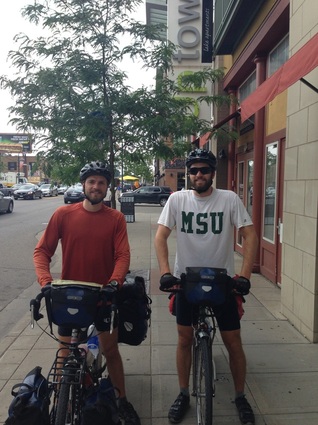
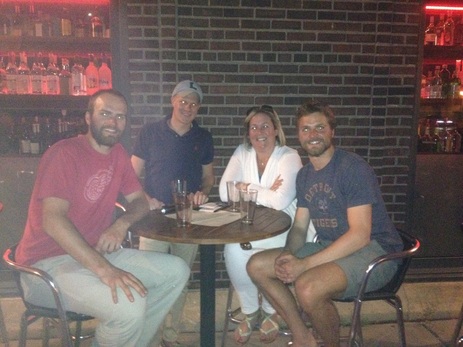
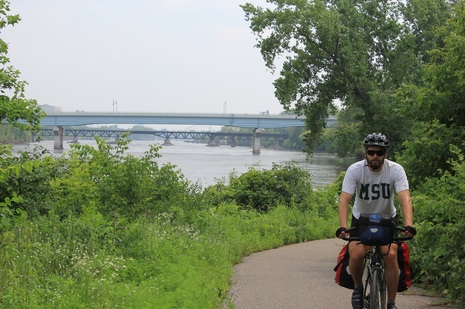
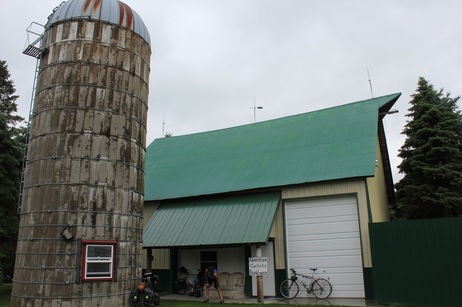
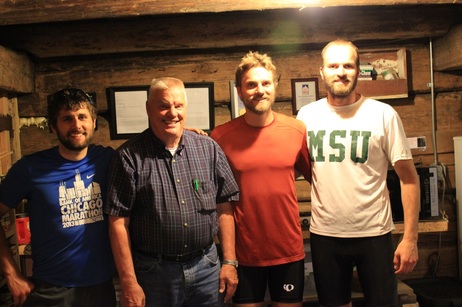
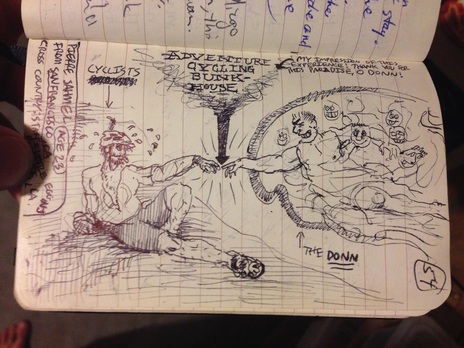
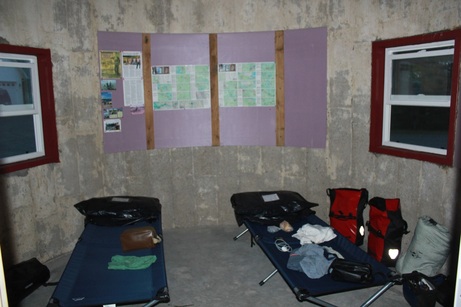
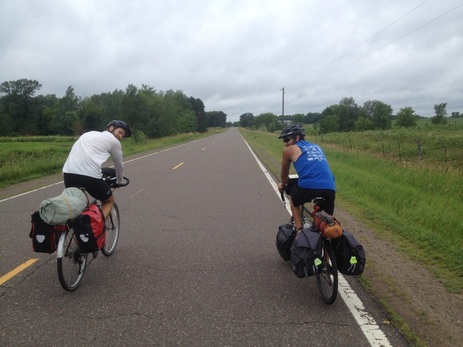
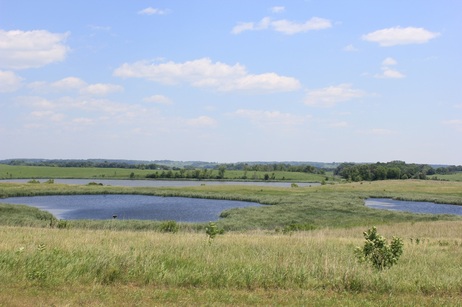
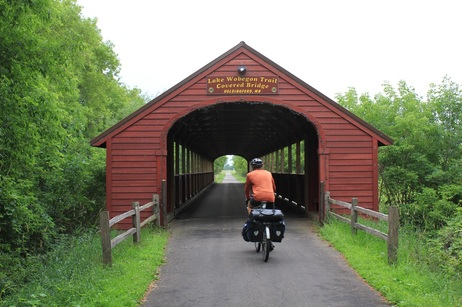
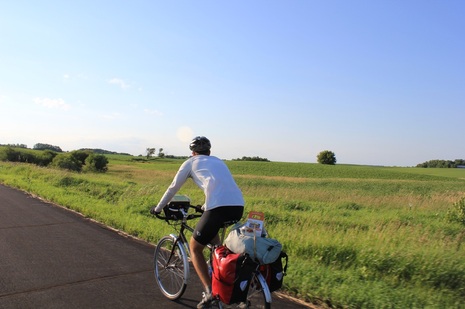
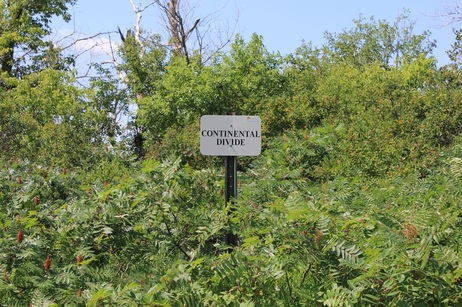
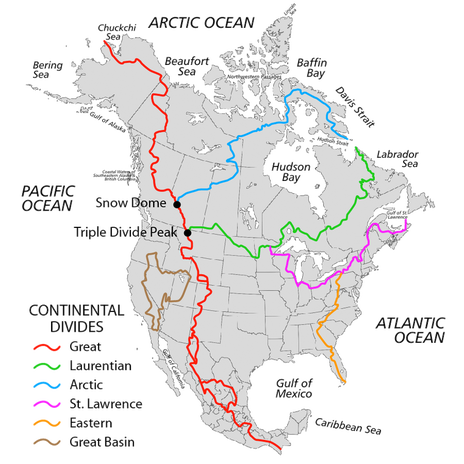
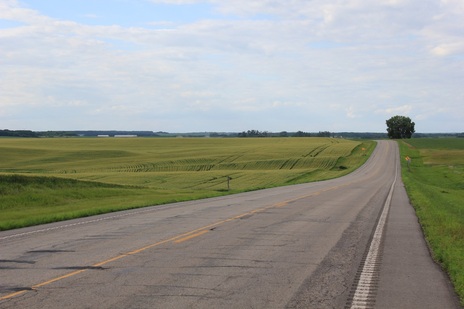
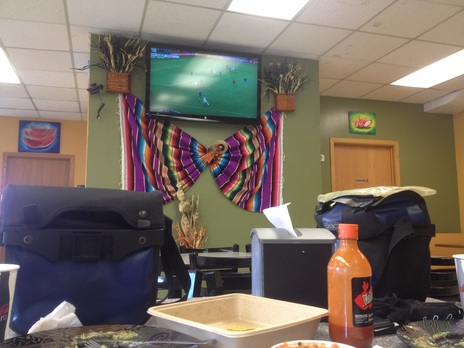
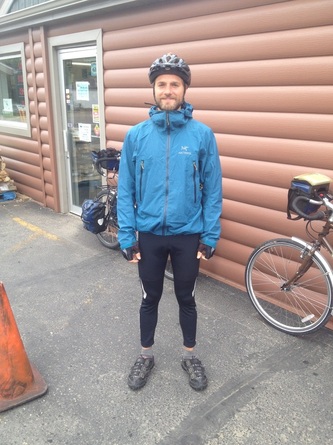
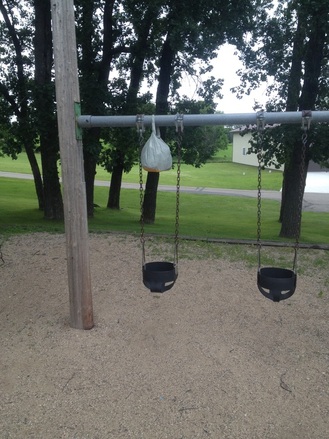
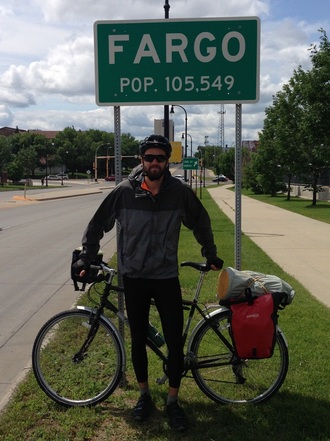
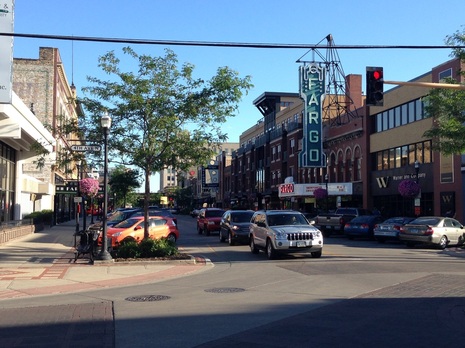
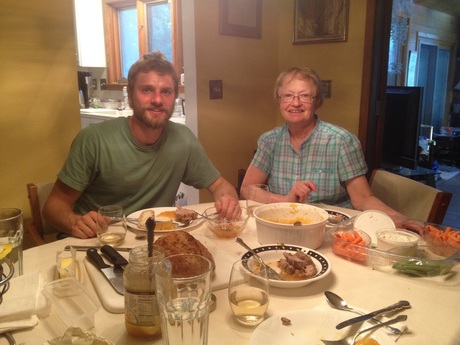
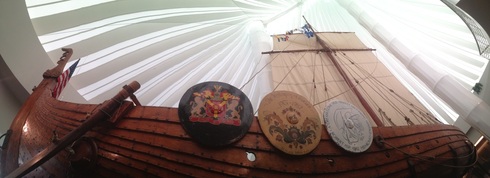
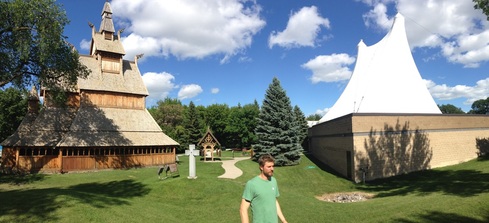
 RSS Feed
RSS Feed